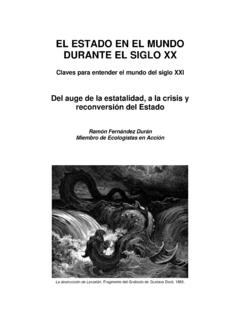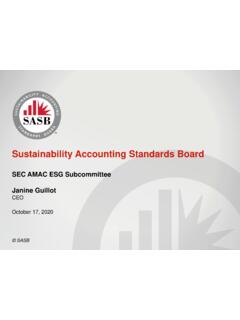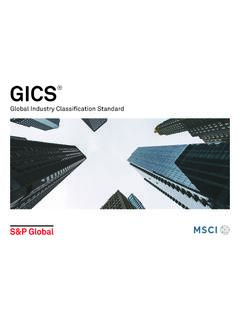Transcription of STATE OF POWER 2017 Mall culture and consumerism in ... …
1 STATE OF POWER 2017 . mall culture and consumerism in the Philippines Jore-Annie Rico and Kim Robert C. de Leon Nowhere else in the world has a population so absorbed in the shopping mall It was a hot Saturday afternoon in October, as Dianne strolls around a popular mall in Manila, along with three of her cousins. I go to this mall every weekend', admits the 22-year old professional. Asked why she frequents the mall so often, she replies that, it's a place where I can relieve stress after a week of hard work. mall cures boredom, too'. Together with her family, Alyssa holds her 9-month old daughter as they dine in a luxurious buffet restaurant in a mall in Quezon City.
2 A public school teacher, Alyssa finds shopping cathartic: I buy some baby items online, like clothes. But I still prefer going to the mall to unwind'. One cannot help but wonder why a population that is one of the poorest in Southeast Asia is so obsessed with shopping malls. Sprawling malls have transformed from being mere commercial centres into community centres complete with dining, cultural, financial, historical, religious, residential and leisure As the new town plazas, malls are viewed as the refuge of choice in the context of the city's One cannot help but wonder why a sweltering heat, suffocating traffic and endemic poverty.
3 With population that is one of the poorest some 153 malls dotting its famous skyline, Manila's transformation in Southeast Asia is so obsessed with from cultural hub to concrete jungle has earned it the notorious shopping malls. moniker as Asia's Shopping Capital'.2. This essay offers a critical examination of the Filipino mall culture by tracing its historical roots and analyzing its interplay with economic POWER . It explores how shopping malls have become the symbols of structural inequality against the backdrop of widening wealth inequality and crippling poverty. The rise (and fall) of malls Shopping malls have an interesting history.
4 It is not widely known that a socialist, Victor Gruen, designed the Southdale Center, regarded as the world's first shopping mall , opened in 1956 in Edina, Minnesota. Gruen was a Viennese architect who had fled to the United States following the occupation of Austria in 1938. Famously known as the father of the shopping mall ', he eventually came to despise his creation. Two years before his death in 1980, he stated, I would like to take this opportunity to disclaim paternity once and for all. I refuse to pay alimony to those bastard developments. They destroyed our cities'.3. The US automobile culture paved the way for the emergence of malls.
5 Between 1956 and 2005, some 1,500 malls were built. The boom was short-lived, however. Between 2007 and 2009, some 400 of the biggest 2,000 malls closed Currently, only 1,000 malls remain in the US, and it is projected that by 2030, half of the country's remaining malls will be replaced by community colleges, business offices, and healthcare mall closures and bankruptcy are not just happening in the United States. The New South China mall , said to be the world's largest, opened in 2005 but has remained 99% vacant. Further, 138. department stores, 262 supermarkets and 6,209 sports stores closed between 2012 to 2015, according to the Beijing Technology and Business 2 | mall culture and consumerism in the Philippines STATE of POWER 2017 .
6 Some analysts associate the death of malls with oversupply and the increasing appeal of online shopping,7 while others argue that developers are merely reinventing traditional malls into something that is mixed use' composed of outdoor shops with green Both perspectives, however, agree that malls are undergoing a transformation from traditional, enclosed infrastructures to vibrant community centres to cater to the ever-changing demands of consumers. Paradoxically, while malls across the world are undergoing a slow and painful death, in the Philippines they continue to expand. The following section discusses the factors that contribute to the country's mall culture .
7 Filipino mall culture as a colonial legacy As early as the 19th century, an account of the Philippines noted that tianguis or markets were a weekly sight in most towns. A Spanish observer even concluded that the Filipino propensity to barter and traffic in all kinds of ways was universal'.9 It was, however, the combined legacies of Spanish and US colonization that led to its enduring Westernized values. What sets it apart from its neighbours is the fact that centuries of Westernization have not led to inclusive growth and development, and current economic progress has not trickled down to the poor.
8 The Philippines was a Spanish colony for over three centuries. Given this long history, colonial legacies remain firmly entrenched. While many would argue that transplanting Catholicism was Spain's greatest influence, its feudal hierarchy is arguably its most lasting legacy. For one, the Spanish galleon trade led to the transformation of Negros Island from forestlands into highly prized sugar haciendas that are still owned by elites even today. These private estates encouraged hierarchical relations among owners, managers, tenants, and farm workers. The landed class, then symbolized by the friars and Filipino principales, lived and worked in sharp contrast to the cash tenants, sharecroppers, and contract Three hundred years of Spanish rule are clearly visible as the country retains its semi-feudal and semi-colonial character.
9 Despite being a US colony for only 50 years, many historians would agree that the Philippines owes the more recent colonial POWER many of its current institutions. The Philippines, arguably the most Westernized in Asia, patterned its educational system, form of governance, infrastructure, and popular culture on Uncle Sam's. Today, English is a national language, in which some Filipinos find it easier to converse than in their own language. But perhaps the most crippling US legacy is consumerism and materialism. While the US mall boom started in the 1950s, the Philippines had its own as early as 1932.
10 It was during the US colonial period when the first enclosed shopping establishment, the Crystal Arcade, was built in Manila. The Crystal Arcade became the capital's most modern structure, even resembling the arcades of Paris, with covered walkways, window displays and caf s and other specialty Aside from being an architectural feat, the Crystal Arcade ushered in an era of a national culture centered on commodity'.12 Although it was ravaged in the Second World War, the Crystal Arcade became the predecessor of modern malls in the country. Fifty years later, malls have become permanent fixtures in the Philippines.






